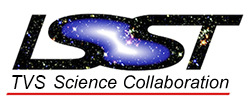Supernovae
Members
Members that collaborated to generate this roadmap:
Stefano Valenti ( UC Davis stfn.valenti@gmail.com ), Federica Bianco (NYU), Dave Arnett (UoA), Raffaella Margutti - NYU, Tom Matheson - NOAO, Saurabh Jha - Rutgers University
Primary subgroup contact:
Stefano Valenti ( UC Davis stfn.valenti@gmail.com )
Subgroup MAF engineer:
Stefano Valenti ( UC Davis stfn.valenti@gmail.com )
Subgroup Primary Members
- David Arnett - University of Arizona
- Lucy Frey - Los Alamos National Laboratory
- Chris Fryer - University of Arizona
- Saurabh Jha - Rutgers University
- Ragnhild Lunnan - CfA Harvard
- Tom Matheson - NOAO
- Eran Ofek - Weizmann Institute
- Masao Sako - University of Pennsylvania
- Michael Wood-Vasey - Pitt
- Brad Cenko - NASA/GSFC
- Ken Shen - UC Berkeley
- Stefano Valenti - UC Davis
- Raffaella Margutti - NYU
- Ryan Chornock - Ohio University
- Lluis Galbany - Universidad del Chile
- David Bersier
- Federica Bianco - NYU
- Peter Brown
- Ori Fox - STsCI
- Melissa Graham - LSST
- Cosimo Inserra - UK
- Ragnhild Lunnan
- Kate Maguire - UK
- Danny Milisavljevic - CfA
- Maryam Modjaz - NYU
- David Reiss
- Stephen Smartt - IR
- Ken Smith
- Mark Sullivan - UK
- Chris D'Andrea - UPenn
- Armin Rest - STSCI
Subgroup Secondary members
- Mark Huber
- Gautham Narayan
- Umaa Rebbapragada
- Johann Cohen-Tanugi
- Lluis Galbany
- Peter Nugent
- James Rhoads
- Shri Kulkarni
- Peter Kurczynski
- Ken Shen
- Chris Smith
- Mansi Kasliwal
- Leo Singer
- Wen-fai Fong
- Raffaella Margutti
- Virginia Trimble
- Howard Bond
- Eran Ofek
- Ken Smith
- Iair Arcavi
- Suvi Gezari
- James Guillochon
- Ashley Zauderer
- Maria Drout
Roadmap Outline
Science Drivers
LSST has a fundamental role in extending our knowledge of transient phenomena.
- Fill the parameter space of transients (fast transients, unknown, Kilonova)
- Supernovae as function of redshift
- Study the rare events (taking advantage of the large number of discovery from LSST)
- Cosmology with SNe Ia
- Cosmology with SN type II
- Precursor Eruption of SNe
- Progenitors study
- Rates of SNe
- Environment studies using large sample of SNe (metallicity, Star formation, Galaxy types)
Different goals need different cadence.
- Some science topics require minimal informations. Progeintor studies, Environment studies, SNe Ia, SNe IIP cosmologies can be achieved as far as the type is known (even if the typing happen when the transient is not visible anymore)
-Type, distance, magnitude at maximum
- Some science topics require informations on the transients that are time critical. We need to be able to identify the interesting transients as soon as possible in order to focus on the interesting transient
-Type, distance, magnitude at maximum, EARLY DISCOVERY, EARLY TYPING
Current Work
The main issue the Supernova subgroup will work in the next months is exploring which cadence is good to address the early classification.
We are working together with other explosive transients groups to collect templates of different transients.
Other members of the explosive transients groups needs to provide multi-wavelength light curve of the transients they are interested in.
The goal is to quantify if we can identify interesting transients with the small number of observations (detection from first night, second set of detections (3-5 days after for the main survey)
Key Questions
- Can we identify interesting transients with the first 2-3 visits in the first night ? If the 3 visit is in a different color does it helps ?
- How our identifications improve with the second observation (~4 days after)
- Do we need to push for a rolling cadence ? In other words if the second observation is ~2 after the first one, is this better that 4 days in term of identification of interesting transients ?
- Is the drilling field useful as it is ? (1h observation (all filters) every ~4 days).
Time Line
Near term (2016)
Find the best cadence to maximize supernova science.
- Add theoretical models to list of templates
- Run MAF on transients templates
